Glassification: Categorizing Sea Glass
By Rebecca Ruger
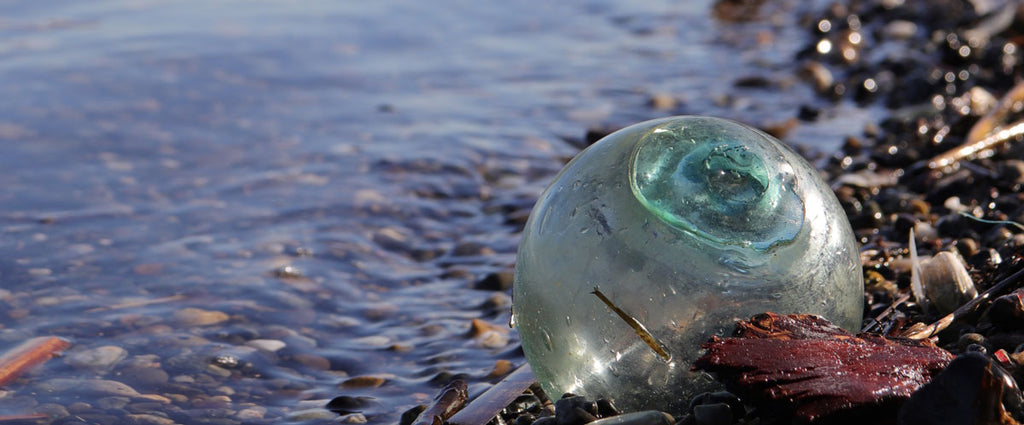
There’s glass. And then there’s sea and beach glass. And just as these are considered—certainly to the sea glass lover—two completely separate entities, so too are the classifications of each.
Man-made glass is categorized in several different ways: by its elemental compound (soda lime glass, borosilicate glass, lead glass, et. al), by its usage (plate glass, safety glass, laminated glass, optical glass), by its construction (pressed glass, blown glass, cut glass), and by its specifications (annealed glass, coated glass, mirrored glass, patterned glass, etc). Such distinctions do not cover all aspects of the glass industry but do provide a rough division among the different types of glass made. Additionally, there are or can be sub-categories and crossovers within each category.

Sea glass, on the other hand, comes with its own distinctions. We can never forget that our treasure is actually trash, of man-made origin with a nature-made finish. And while those origins (if we can determine them) will help to classify our finds, sea glass collectors are happy to keep it simple. Generally, sea glass is grouped into vessel glass, utilitarian glass, and art glass. As expected, each of these will have their own sub-categories.
Vessel Glass

By far the most crowded field, vessel glass encompasses any glass that is used to store or contain any liquid or product. This can be bottles, jars, or other containers, typically cylindrical and without handles and with a narrow neck that can be plugged or capped. Bottles come in a rainbow of glass colors and shapes.
Learn more about bottles
Learn more about identifying bottles by shape and color, the history of bottle manufacturing, stoppers, marbles, and more. Articles ›
Some will add bowls to this category, as they, too, are used to contain something. Vessel glass will most often be production glass — pressed or mold-blown and produced in mass quantities.
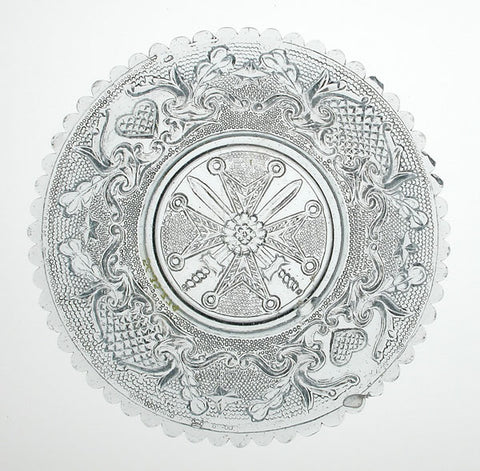
Pressed glass, sometimes called pattern glass or molded glass, was made by "pressing" the molten glass into molds, and was first used in the US in 1825. Originally, it had been used almost exclusively for door and drawer knobs and more interestingly, glass cup plates*. Pattern glass was made with a raised design in the (usually) cast-iron mold and afforded the lower classes a cheap imitation of cut crystal. By the middle of the 19th century, pressed glass was the most inexpensive, mass-produced glassware.
Utilitarian Glass
This category will likely comprise the most cherished finds for the beachcomber. Utilitarian glass is glass that was originally made with utility as the emphasis over other purposes, though they may have been decorative as well. Utilitarian glass can include bottle stoppers, glass insulators, Codd bottles and Codd marbles, lantern glass, stoplights, and fishing floats among other items. Many of these items save for the earliest made will also have been made in molds. Other forms of utilitarian glass, such as window glass, fish bowls, and oil lamp glass may produce less excitement from the beachcomber.
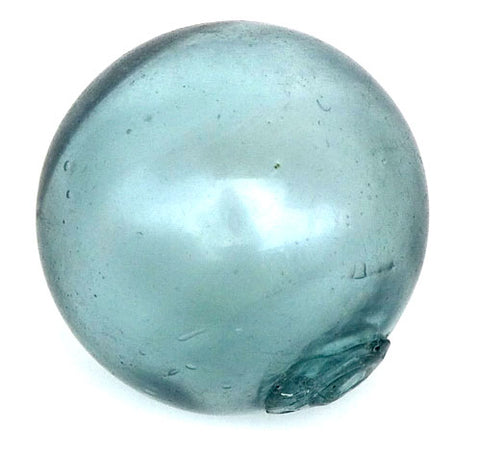
Glass fishing floats are often associated with origins in Japan, though the earliest known floats were actually made in Norway in the 1840s. They were originally and most often handmade by glassblowers (in Japan, they often used recycled sake bottles). Later manufacturing used wooden molds to speed up production and create uniform sizes and shapes. These molded floats may still have visible mold seams, whereas the earliest blown floats will be seamless and may include a “sealing button”—a button of melted glass used to seal the bulb once removed from the blowpipe.
Learn more about floats
See some of our favorite lighthouses, learn about life as a lightkeeper, make a lighthouse-themed craft, and more. Articles ›
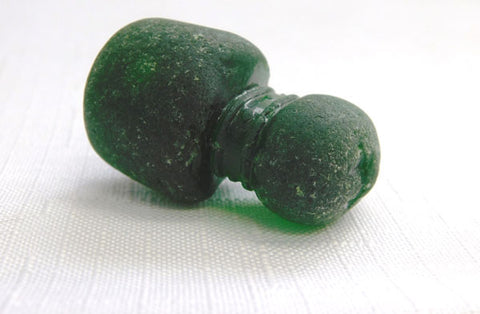
A great many methods have been invented for the purpose of closing bottles—corks, screws, Codd marbles and cap-and-spring, to name a few—but none that thrill the beachcomber more than the glass stopper. The bottle stopper made of glass, rarely called a bung, consisted of three parts: the shank, which fit into the bottle; the finial, which was the top and used to pull the stopper from the bottle; and the neck, which connected the shank to the finial. Most stoppers were molded and the shank ground down to fit precisely into the bottle. The earliest stoppers and bottles were hand blown and made to fit together; that is, both the opening of the bottle and the shank of the stopper would be ground specifically to fit each other, thus early stoppers may be a relatively unique fit to a specific bottle. Additionally, some of our beach found stoppers may have originally been part of a “shell cork and stopper” style, where the bottle and shank of the stopper were not ground to fit each other, but fit instead by the insertion of a hollow piece of cork to the shank of the stopper which would provide a tight seal.
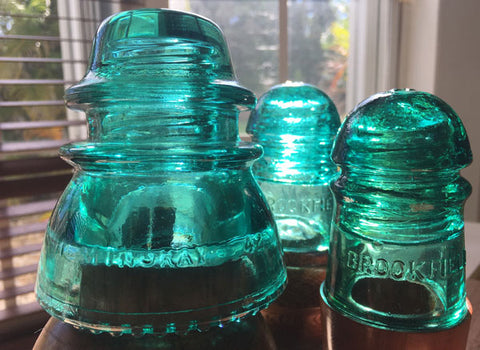
The glass insulator was first put into use in the US in the mid-19th century as a telegraph wire insulator. The purpose of the insulator was to prevent the electricity from going where it wasn’t supposed to go, either to the pole or the ground. Glass, as a fast drying, non-conductive material, filled this need. The Hemingray Glass Company was the most prolific maker of glass insulators. The most expensive collectible insulators sell for thousands of dollars on eBay and other collector sites. There are certain features that can help you identify insulator sea glass. Antique glass electrical insulators come in a range of colors, including beautiful teal glass.
Art Glass
Art glass as sea glass is most often coveted for the beauty of its artwork as decoration, but even the majority of this glass had a practical purpose as well. In truth, many items that were originally created to be useful are only now considered art glass. Stained glass, marbles, vases, millefiori, sculpture, and highly decorative perfume bottles are examples of art glass. Most glass that is deemed art glass will have several varieties of color and possibly special effects such as opaqueness or transparency to create a pleasing aesthetic effect.

Stained glass windows are much less likely to be the source of the colored glass, but if you could definitively ID it as such, would you categorize as art glass or utilitarian?
While any piece of glass may eventually find its way into the lake or ocean, and return to shore as sea glass, art glass is perhaps the rarest category. Whether intentional art glass or presumed art glass, these pieces will be your rarest finds as this type of glass was rarely mass produced due to expense, time, and consumption, and likely a greater treasure to the owner (read: less likely to be discarded, by whatever means, into the water).
Learn about the art glass made in North East England and the multicolor sea glass that comes from it.
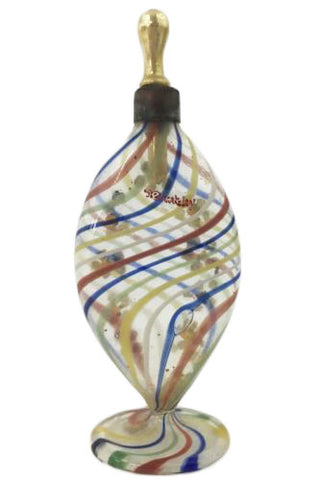
As stated earlier, crossover in these categories is likely, with some items belonging to more than one category, such as a multi-colored perfume bottle (vessel or art glass?); stained-glass window or Murano glass paperweight (utilitarian? art glass?) or canning jars (utilitarian or vessel glass?).
Raw Glass
Raw glass, from the manufacturing of glass (but not the end product) and end-of-day glass may be additional ways to categorize sea glass.
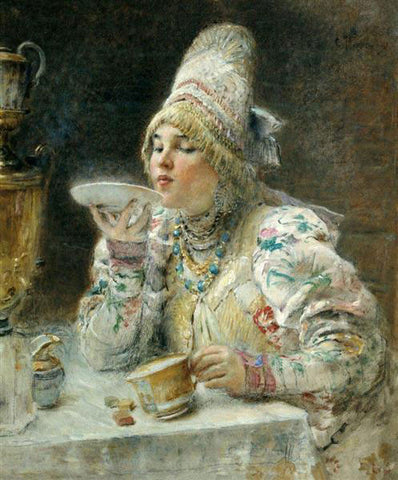
*Fun Fact: Cup plates (saucers) were at times used for more than merely holding the tea cup and protecting a surface. In Russia the tea was especially hot, and tea drinkers (mostly the merchant class)would pour the liquid from the cup into the saucer to cool, and drink from there. This practice extended a bit to British tea drinkers, and likely was brought to America by European immigrants. In Laura Ingalls-Wilder’s Farmer Boy, published in 1933, there is mention of saucering tea: “Father blew on the tea in his saucer. He tasted it, then drained the saucer and poured a little more tea into it."
Learn more sea and beach glass terms ›
This article appeared in the Glassing Magazine March/April 2018 issue.









